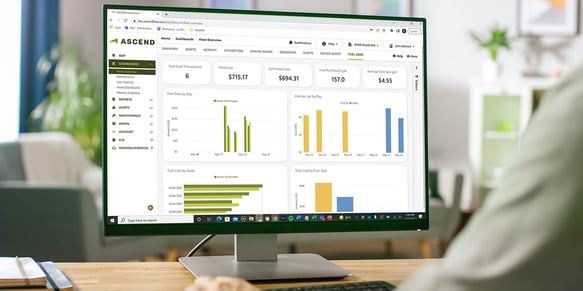When it comes to implementing a telematics solution, the extent to which the solutions provider acts as a true partner goes a long way toward ensuring success. In [the first blog in this series], I discussed the importance of the provider’s role in a successful implementation. But equally important is the work, thought, and planning you, as the company implementing the solution, need to contribute.
That means answering key questions that will define what you are realistically trying to accomplish with telematics, how your business will most beneficially use the data, and what a successful implementation will look like.
While these questions must ultimately be answered by your company, the provider should be able to help by drawing on their work with other companies that are either in your industry or which share other relevant similarities. If your provider is a true partner, you shouldn’t be on your own to come up with answers.
 What data is most important to access, report on, and make accessible? A robust telematics solution can provide a potentially overwhelming amount of data about your fleet. However, it’s intelligence and useful insights – not raw data – that you’ll ultimately want. For example, if you’re a construction company you’ll probably most need data related to asset utilization. A transportation company, meanwhile, will prioritize the ability to track and manage fuel efficiency and compliance.
What data is most important to access, report on, and make accessible? A robust telematics solution can provide a potentially overwhelming amount of data about your fleet. However, it’s intelligence and useful insights – not raw data – that you’ll ultimately want. For example, if you’re a construction company you’ll probably most need data related to asset utilization. A transportation company, meanwhile, will prioritize the ability to track and manage fuel efficiency and compliance.
Within these broader categories you’ll need to determine the specific data points and metrics that will matter most and how to extract them from the telematics system so you can make smarter decisions about your fleet and your business. You’ll also need to establish benchmarks to provide context for your data.
Given their deep knowledge of their product, your telematics provider should be able to help you on all these fronts.
What will a successful implementation look like? The first step in creating an implementation plan is to define what success will look like.
Integrating all your critical data streams and making them visible on a single pane of glass? Getting your entire fleet connected and reporting actionable data? Having all your people upskilled on how to use the system? Conducting digital inspections on all your equipment and viewing the results in real time?
Most likely, success will entail a combination of all these. If so, you’ll need to include them in your definition of a successful implementation. You’ll also need objectives and key performance indicators to track your progress over time. Again, the telematics provider should be able to help you come up with effective milestones based on their work with other companies and their knowledge of your industry.
Who are our most important internal stakeholders? Implementing a telematics system is a big change for any company. To make it successful, you need to identify each of your most important stakeholder groups – including drivers, technicians, managers, executives, and others – and determine how the change is likely to impact them.
What priorities and concerns might they have? What information do you need to communicate to them – and when? What training do they need to interact with and successfully use the system? If they are a true, knowledgeable partner, the telematics provider will be able to help you identify and address the needs of each of these groups.
When will we need to re-evaluate our investment? If you have signed a standard three-year contract, you will want to begin the process of revisiting your investment before the contract ends – and before you are locked into an autorenewal. To ensure this evaluation happens within a timeframe that will allow you to adequately explore alternatives – typically at least six months before the end of the contract – build it into your implementation timeline at the outset.
Minding All the Moving Parts
There’s a lot to consider and a lot of moving parts in the successful implementation of a telematics solution. Unfortunately, that also means are a lot of opportunities to skip important steps or not do everything you should.
But if you have selected a telematics provider that offers a great solution and is also a great partner, there is a much higher likelihood that your company’s adoption of telematics will get off on the right foot.

